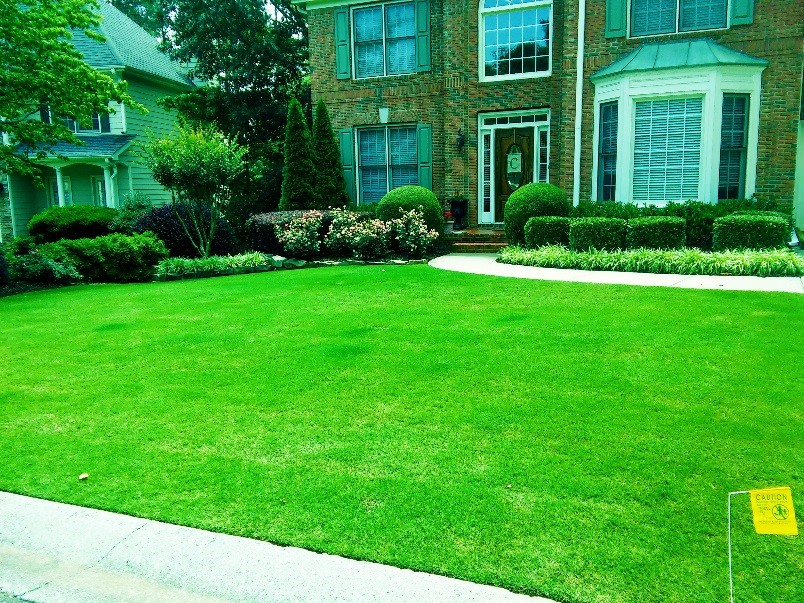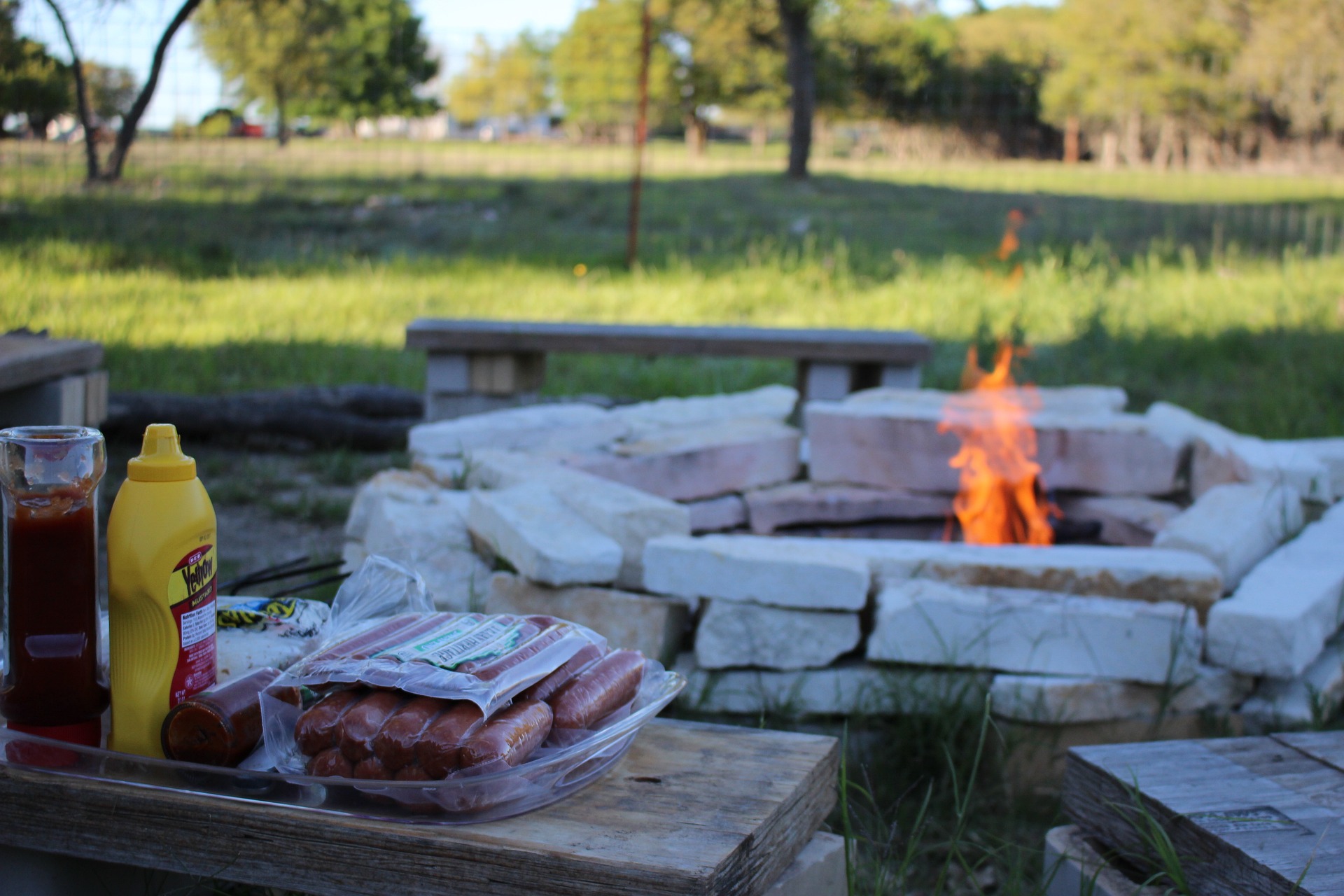
Creeping Charlie was brought to North America as a medicinal herb and ornamental plant. Since then, the plant has spread rapidly throughout the country in natural areas, distributed sites and, most commonly, lawns. It reproduces from any small fragment of its root, making it incredibly difficult to get rid of once it reaches the lawn. Fortunately, there are ways to eliminate this annoying weed from lawn areas and keep your lawn greener.
Identifying creepy Charlie
This common weed affects lawns and other residential lawns, especially where there is a lot of shade. However, aggressive weeds can also thrive in sunlight and quickly spread to other parts of the garden, ruining its uniformity and attractiveness.
Creeping Charlie is a low-growing, evergreen weed species that spreads rapidly by runners. It has scalloped leaves with round or oval edges, and the leaves are a darker shade of green on top and light green or purple on the bottom. Its flowers range from pale lavender to dark purple and bloom in spring.
What does sneaky Charlie look like?
Creeping Charlie is relatively easy to notice in the garden. Your lawn may start to look unhealthy before you see the weeds themselves. It can grow up to 30 centimeters tall with bright green scalloped leaves 2 to 5 centimeters wide and square edges.
Ground ivy produces clusters of blue to purple flowers in the spring and early summer months with a funnel-shaped bouquet of two or three flowers. It is a very adaptable weed with shallow roots. It has a node at the base of each stem that can take root when it comes into contact with the soil. This characteristic makes the stealthy Charlie especially difficult to control. The weed will grow back even if you pull out all the vines but leave even a small piece.
Watch out for its kidney-shaped leaves and glossy, bright green appearance, especially in lawns with overly moist soil and little fertilization.
Creeping Charlie vs. Wild Violet: What’s the difference?
Owners sometimes confuse rake Charlie with wild violet because of the similarity of their leaf and flower colors. We advise lawn owners to look closely at the leaves to distinguish the two weed species.
The wild violet has heart-shaped leaves with sawtooth edges, while the creeping Charlie has more pronounced scalloped leaf edges. Charlie’s creeping leaves also have a minty smell when crushed.
Are there others like Charlie?
Creeping Charlie shares characteristics with other plants, making it more difficult to control, especially when incorrect control methods are used for others similar to Creeping Charlie. The three biggest and most disgusting Charlies are:
- Common mallow: This flowering plant is native to Europe and grows in lowlands. It has a long woody stem that branches from its base, which can sometimes grow upright.
- Henbit – Shares common characteristics with creeping Charlie, including the shape of its flowers and leaves. Its leaves are not as shiny as those of creeping Charlie and are pinkish purple, unlike the dark purple of ground ivy.
- Purple Dead Nettle: This flowering plant can reproduce vegetatively from a single piece of leaf or stem, making it difficult to control. Mature plants grow no more than 10 inches tall.
Controlling creepy Charlie
Like most lawn weeds, ground ivy thrives best in unhealthy soil. Therefore, proper watering, mowing, and fertilizing practices are an excellent starting point for preventing the spread of weeds.
Controlling aggressive weeds can be a challenge for homeowners. That is why, for the most effective preventative and control results, we recommend hiring a professional landscaping expert. Landscaping professionals have the knowledge and tools to assess the size of the infestation and preventative measures to prevent the weed from re-germinating once removed.
How to eliminate creepy Charlie
Here are other effective ways homeowners can control and prevent Charlie from invading their lawn.
Remove creeping Charlie by hand
This control method is most effective for lawns with few ground ivy weeds. Homeowners must combat the weed quickly before it spreads and becomes more difficult to control.
We recommend wearing a pair of gloves to prevent the herb from causing an allergic reaction. Lawn owners should also wet the soil near the weed before pulling it to soften its roots and make the rhizomes easier to remove. Removing all parts of the plant above and below ground is crucial for the most effective results.
While this method is not effective at eliminating moderate to large weed infestations, it can help stop small spots before they spread.
Smother Charlie Crawling
While creeping charlie is an aggressive plant that thrives in shade or sun, homeowners can still eliminate larger areas of their lawn by completely blocking sun exposure and smothering it.
Smothering creeping Charlie is most effective for moderate patches of weeds in a localized section of the lawn. However, it is worth mentioning that other plants in the surrounding area can also suffocate.
Kill creepy Charlie using chemicals
This control method is most effective for severe creeping charlie infestations. Although creeping charlie is considered a broadleaf weed, it is not affected by most broad-spectrum herbicides. That is why we recommend using herbicides containing dicamba or triclopyr.
However, these herbicides may need to be applied multiple times at the appropriate time for the most successful results. We recommend using dicamba-based herbicides on affected soil in early fall, when ground ivy is growing most actively.
Applying pre-emergent herbicides in the fall weakens the weed enough that it will have difficulty surviving over the winter. Do not mow the controlled area for at least 2 days to allow the herbicide to penetrate the plant roots. This prevents the weed from germinating again in spring.
Applying pre-emergent herbicides helps combat weed infestations before they spread through your lawn. We recommend following the manufacturer’s application and treatment methods for the most effective results.
How does creeping Charlie spread?
Creeping Charlie is a perennial herbaceous weed that spreads by seed. It also spreads through creeping stems that grow along the ground, making it difficult to control once it infests a significant portion of the land.
Preventing Creeping Charlie
As mentioned above, ground ivy tends to take root in poorly maintained soil or in lawns that suffer from disease or fungal infections. Maintaining a healthy lawn effectively prevents weeds, including creeping Charlie, from taking over your property while increasing its curb appeal. Follow these good lawn care practices to prevent Charlie creep in your yard:
- Mow regularly: Tall grass makes it difficult for grass to take up the nutrients it needs from the soil. When grass is too long, the roots struggle to obtain oxygen and water from the atmosphere, causing them to weaken. This can leave room for weeds, such as creeping Charlie, to move in and take over the areas left by the dying grass. Also, like most weeds, creeping Charlie does not do well in regularly mowed lawns.
- Overseeding patches in lawn areas: Weeds are known to invade bare patches in lawns and compete with other plants and grasses for nutrients and other resources. Creeping Charlie is very hardy and can grow in areas where grass has trouble thriving and competing with other grass species for nutrients and resources.
- Water and fertilize the lawn: A healthy lawn is the best weapon against many weeds. When the roots are healthy, the grass becomes thicker, leaving fewer spaces and opportunities for Charlie to invade or thrive. Feed the soil and give grass seeds the nutrients and strength they need to outcompete invasive weeds.
Lawn Doctor offers homeowners easier and more effective ways to maintain a healthy lawn all year round. Our professional landscaping experts check the extent of weed spread and use effective control methods to eradicate weeds from your lawn and prevent future attacks.
Will pre-emergent herbicides help prevention?
Creeping Charlie is a perennial weed that spreads by seeds and roots. General-purpose herbicides only prevent weeds from spreading through seeds, while pre-emergent herbicides prevent weeds and soil roots from germinating.
Lawn owners with previous ivy infestations should use pre-emergent herbicides to prevent weed growth the following season. We advise lawn owners to consult their herbicide suppliers for the best and most effective pre-emergent product for creeping Charlie.
Consult the manufacturer’s manual when mixing the herbicide with water. Pour the solution into a hand-pump sprayer or granular spreader to evenly cover weed-infested soil. Depending on the pre-emergent solution used, a second application may also be needed. Again, refer to the product label for measurement and application details.
When is the best time to apply a pre-emergent herbicide?
The best time to use pre-emergent herbicides is before creeping Charlie begins to germinate. You can apply it in early spring, after the last frost of winter, or before the first frost of fall, before the ground freezes.
Frequent questions
Is Ground Ivy the same as Creeping Charlie?
Yes, Creeping Charlie is a common ground cover plant known by other names including ground ivy, above-ground gills, creeping jenny, and runaway robot.
Is there a way to kill creeping Charlie without damaging the lawn?
The most effective method for removing ground ivy without killing or damaging other plants or grass is mechanical removal by hand. We recommend homeowners cut back creeping Charlie to the roots frequently or dig up the entire plant. Be sure to get as much of the plant root as possible and wear protective gloves to avoid contact with the leaves.
If you prefer to use an herbicide, do not use one that contains glyphosate because this chemical also kills grass. Instead, use a herbicide with dicamba, which is harmless to most grass species.
At Lawn Doctor, we offer a variety of lawn treatments, including removing and preventing creeping Charlie from invading your lawn. Contact our landscaping experts for help with your Charlie infestation.










